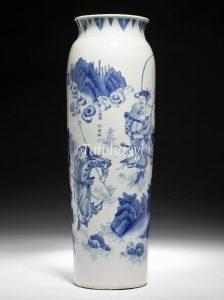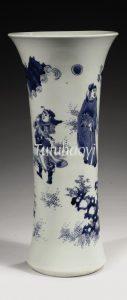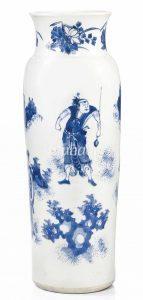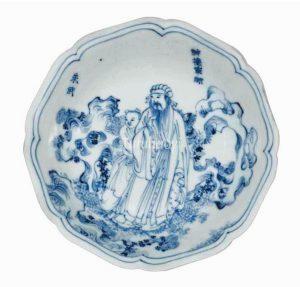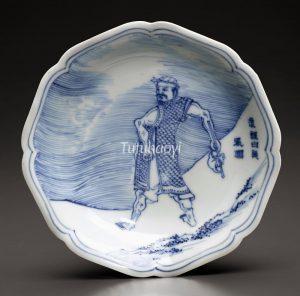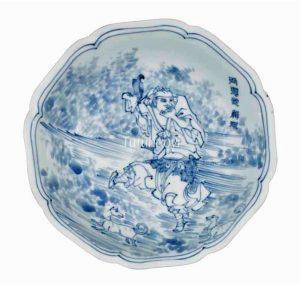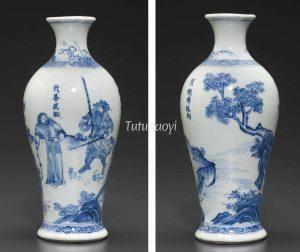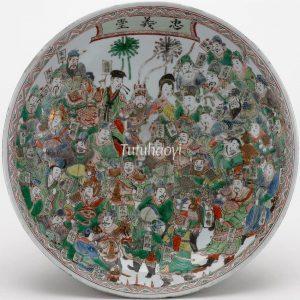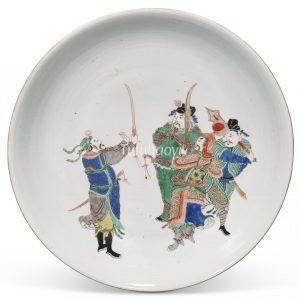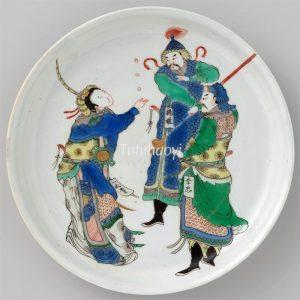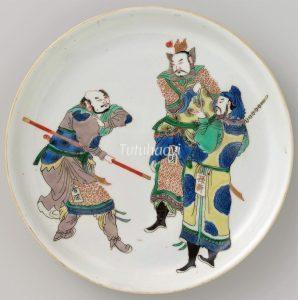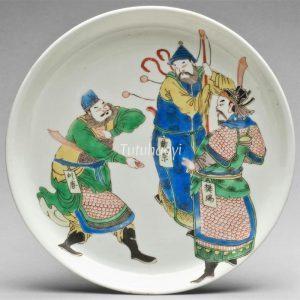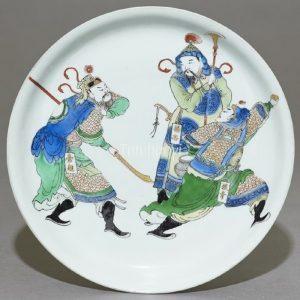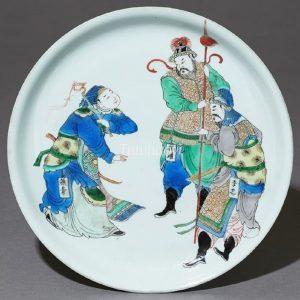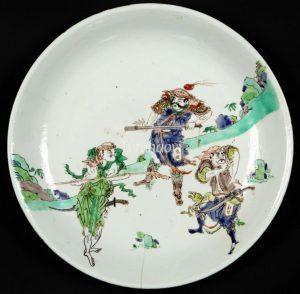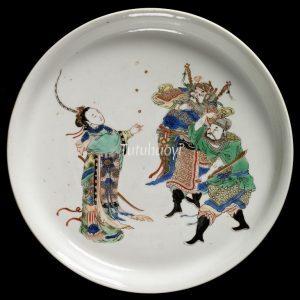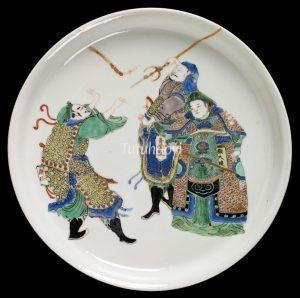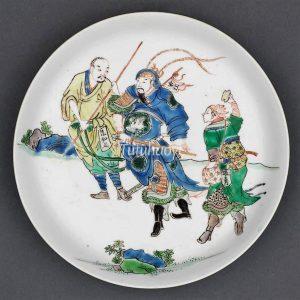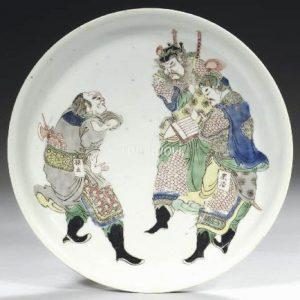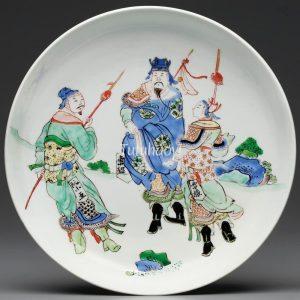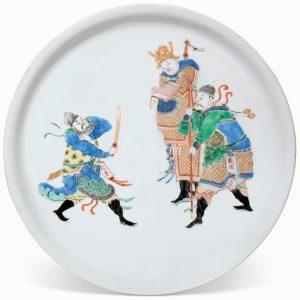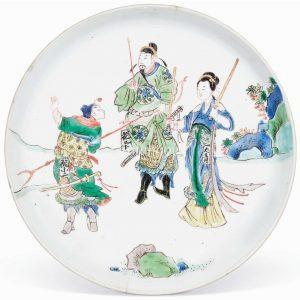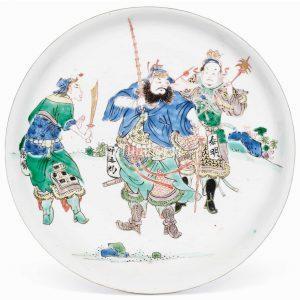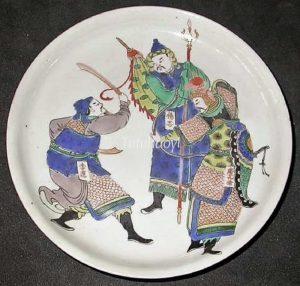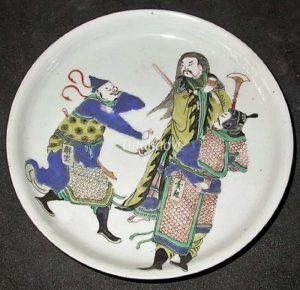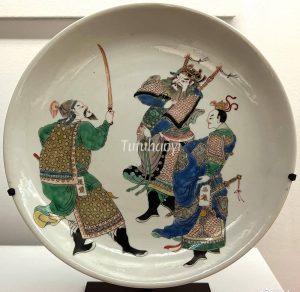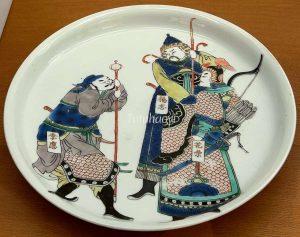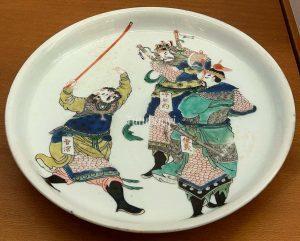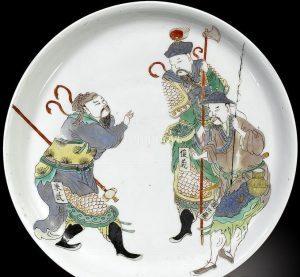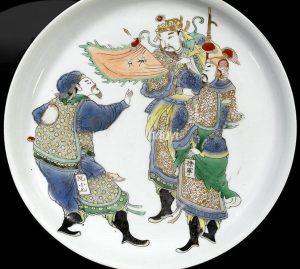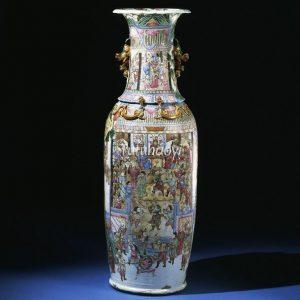Water Margin
水浒传
© Tutuhaoyi.com owns the copyright of the description content for the images attached. Quoting all or part of the description content on this page is permitted ONLY IF ‘Tutuhaoyi.com’ is clearly acknowledged anywhere your quote is produced unless stated otherwise. (本页描述内容版权归Tutuhaoyi.com所有,转发或引用需注明 “Tutuhaoyi.com”, 侵权必究, 已注开源信息的条目除外。)
Water Margin, also known as Outlaws of the Marsh or All Men Are Brothers, is a classic Chinese novel written during the Ming Dynasty. It is considered one of the Four Great Classical Novels of Chinese literature.
The authorship of the Water Margin has always been a subject of debate, and the most widely accepted view is that it was written by Shi Nai’an 施耐庵. There have been several other viewpoints in history, including those of Luo Guanzhong 罗贯中 and Shi Hui 施惠.
The story portrays the corrupt state of the Northern Song Dynasty in the early twelfth century, where treacherous court officials held significant power and treated Emperor Huizong 宋徽宗 as a puppet, setting up loyal officials and innocent people. The one hundred and eight outlaws in the story each had their own unique traits and experiences, some being wrongfully framed and having nowhere to escape, eventually being forced to seek refuge at Liangshan Marsh. They defended justice, fought against social inequality, and resorted to robbing the rich to help the poor. Over time, their group grew stronger, leading to a rebellion against the corrupt government. However, towards the end of the story, the outlaws accepted amnesty.
The content of the Water Margin, which focuses on a gathering of people opposing the imperial court, was considered a major taboo for feudal dynasties. Therefore, from the reign of Emperor Chongzhen to the end of the Qing Dynasty, the Water Margin remained a banned book. The prohibition was particularly strict during the reigns of the Kangxi, Qianlong, Jiaqing, and Daoguang Emperors of the Qing Dynasty. However, it is incredible to see the depictions of the characters and story scenes from the Water Margin on many Kangxi folk porcelains.
Stories of the Outlaws in the Novel:
Fig 1-4: sleeve vase with underglaze blue decoration, c. 1640, courtesy of Bonhams Auction House London, 11 November 2010, Lot 364
Fig 5: pair of rolwagen vases with underglaze blue decoration, mid-17th century, courtesy of The Royal Collection Trust, UK, RCIN 1208
Fig 6: gu vase with underglaze blue decoration, Chongzhen period (1628–44), Ming dynasty, courtesy of Christie’s Auction House, 1 July 2010, Lot 224
FIg 7: rouleau vase with underglaze blue decoration, Shunzhi period (1644–61), Qing dynasty, courtesy of Christie’s Auction House, Paris, 22 Jun 2016, Lot 140
Fig 8-11: small porcelain dishes with underglaze blue decoration, Shunzhi period (1644–61), Qing dynasty, courtesy of Christie’s Auction House New York, 16 Mar 2015, Lot 3556
Fig 12: vase with underglaze blue decoration, mid-17th century, courtesy of Asian Civilisations Museum, Singapore, Accession No. 2002-00083
Fig 13: porcelain vase with underglaze blue decoration, Kangxi period (1662–1722), Qing dynasty, courtesy of Christie’s Auction House, New York, 16 March 15, Lot 3572
Fig 14: famille verte porcelain dish, Kangxi period (1662–1722), Qing dynasty, courtesy of the Trustees of the British Museum, Museum number: Franks.522.+
Fig 15-16: pair of gilt-decorated famille verte plates, Kangxi period (1662–1722), Qing dynasty, courtesy of the National Gallery of Victoria, Melbourne; Felton Bequest, 1923; Photo: National Gallery of Victoria, Melbourne
Fig 17: gilt-decorated famille verte plates, Kangxi period (1662–1722), Qing dynasty, courtesy of Christie’s Auction House, Hong Kong, 30 Nov 2023, Lot 3051
Fig 18: famille verte porcelain dish, Kangxi period (1662–1722), Qing dynasty, courtesy of the Metropolitan Museum of Art, New York, Accession Number: 21.175.39
Fig 19-20: famille verte porcelain dishes, Kangxi period (1662–1722), Qing dynasty, courtesy of the Rijksmuseum, Amsterdam
Fig 21: famille verte porcelain dish, Kangxi period (1662–1722), Qing dynasty, courtesy of the National Palace Museum, Taipei
Fig 22-24: famille verte porcelain dishes, Kangxi period (1662–1722), Qing dynasty, courtesy of Philadelphia Museum of Art
Fig 25: famille verte porcelain dish, Kangxi period (1662–1722), Qing dynasty, courtesy of Ashmolean Museum, University of Oxford, Accession no: EAX.3531
Fig 26: famille verte porcelain dish, Kangxi period (1662–1722), Qing dynasty, courtesy of Ashmolean Museum, University of Oxford, Accession no: EAX.3532
Fig 27: famille verte porcelain dish, Kangxi period (1662–1722), Qing dynasty, courtesy of Ashmolean Museum, University of Oxford, Accession no: EA1978.1256
Fig 28-31: famille verte porcelain dishes, Kangxi period (1662–1722), Qing dynasty, courtesy of the Victoria & Albert Museum, London
Fig 32-33: famille verte porcelain dishes, Kangxi period (1662–1722), Qing dynasty, courtesy of the Jie Rui Tang Collection
Fig 34: famille verte porcelain dish, Kangxi period (1662–1722), Qing dynasty, courtesy of Marchant Gallery, London
Fig 35: famille verte porcelain saucer dish, Kangxi period (1662–1722), Qing dynasty, courtesy of Christie’s Auction House Amsterdam, 21 Nov 2007, Lot 209
Fig 36: famille verte green-glaze-backed dish, Kangxi period (1662–1722), Qing dynasty, courtesy of Christie’s New York, 14 September 2017, Lot 741
Fig 37: famille verte porcelain dish, Kangxi period (1662–1722), Qing dynasty, courtesy of Christie’s Auction House London, 5 Nov 2019, Lot 179
Fig 38-39: famille verte lime-green-back dishes, Kangxi period (1662–1722), Qing dynasty, courtesy of Christie’s Auction House HK, 30 May 2023, Lot 2823
Fig 40-42: famille verte porcelain dishes, Kangxi period (1662–1722), Qing dynasty, courtesy of The Burrell Collection, Glasgow, UK
Fig 43-47: famille verte porcelain dishes, Kangxi period (1662–1722), Qing dynasty, courtesy of The Guimet Museum, Paris
Fig 48-49: famille verte porcelain dishes, Kangxi period (1662–1722), Qing dynasty, courtesy of Wallis Auction, UK, 30 Sept 2012, Lot 204
Fig 50: porcelain vase with enamelled decoration, ca. 1849-1850, courtesy of the Victoria & Albert Museum, London, Accession Number 666-1883

